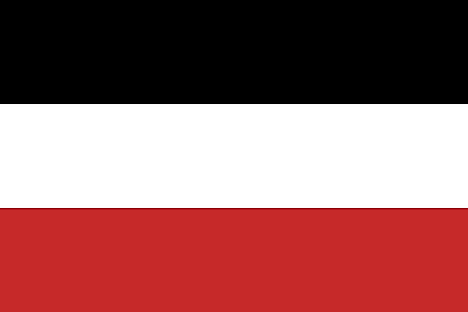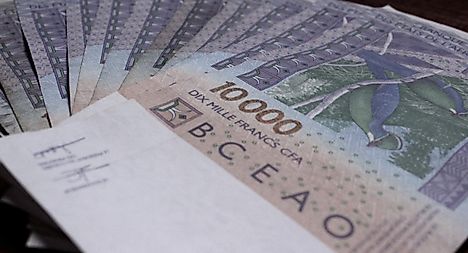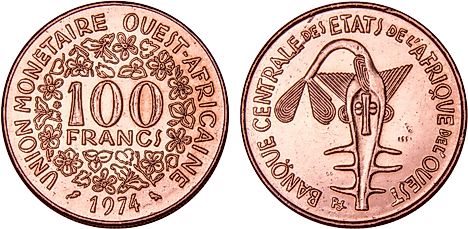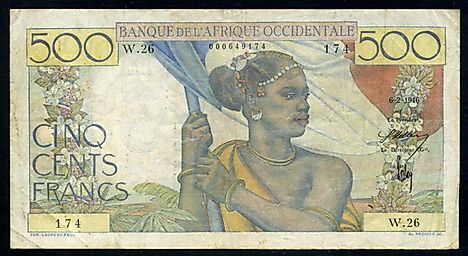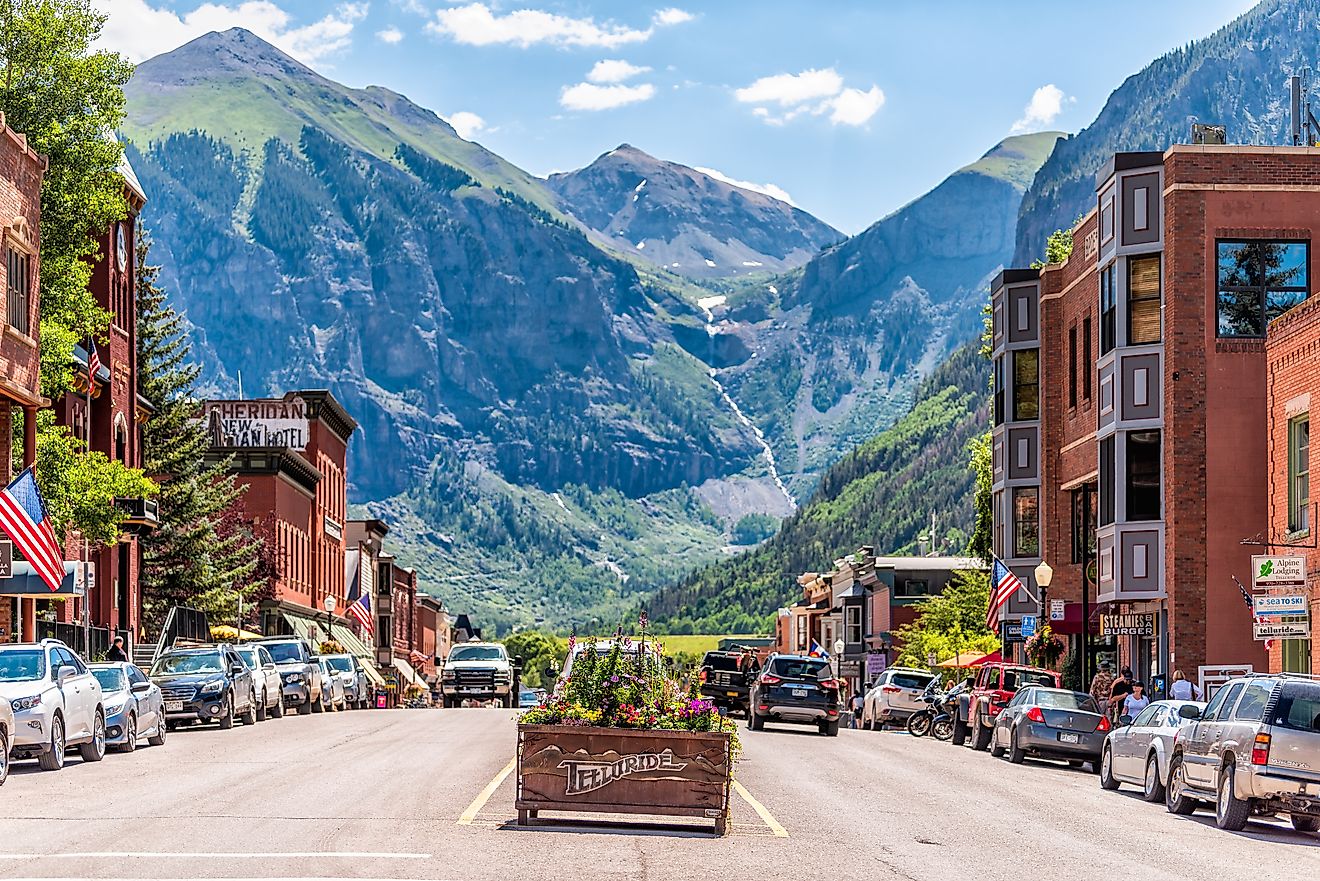Flags, Symbols & Currency of Burkina Faso
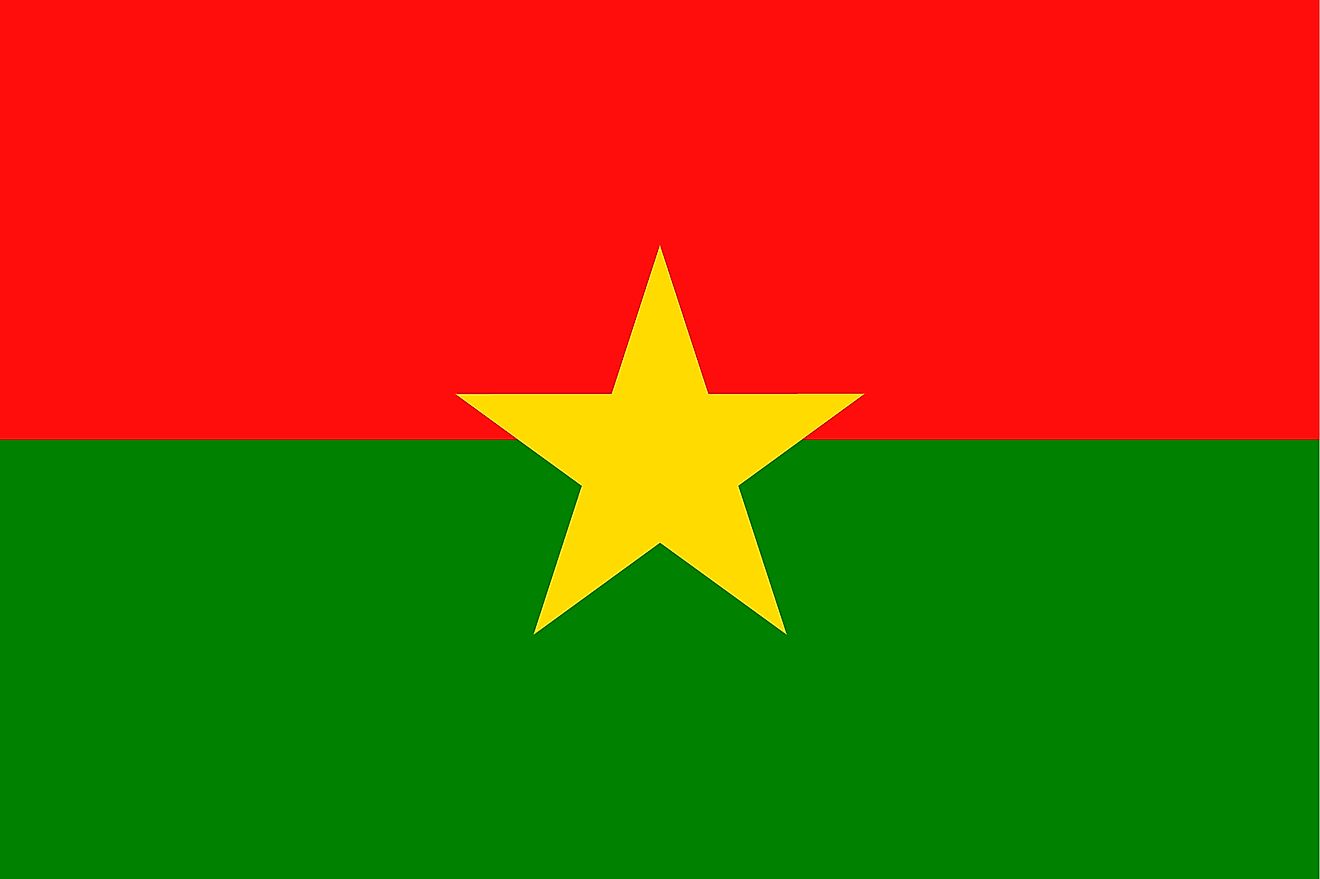
The National Flag of Burkina Faso was officially adopted on August 4, 1984. The flag's design is believed to have been inspired by the National Liberation Front of South Vietnam’s flag.
The flag of Burkina Faso features two equal horizontal bands of red (top) and green with a yellow five-pointed star in the center. It is a combination of the popular Pan-African colors that signify a break from the country’s oppressive colonial past and its integration with other African ex-colonies. The red color signifies the revolutionary struggles for independence that was necessary for shifting the nation’s focus. The green color is a symbol of hope and the richness of agriculture and natural vegetation. The yellow star at the center is a guiding light of revolution leadership programs. It also signifies the country’s rich endowment of mineral wealth. The flag has a height to width proportion ratio of 2:3.
History of the Flag of Burkina Faso
In the late 18th century, during the French imperial rule, the tricolor national flag of France flew over the country and was the official flag of Burkina Faso. In December 1959, the executive council of the government under the French colony adopted the Upper Volta’s first flag which had equal horizontal bands of black, white, and red. The bands represented the three branches of River Volta (Red, Black, and White, which rise from the Bobo Dioulasso Highlands in Burkina Faso). In 1983, former prime minister Thomas Sankara, captured the Upper Volta Region and became the President. To instigate his people to follow Pan Africanism, Thomas Sankara renamed the country on August 4, 1984, from Upper Volta to Burkina Faso (meaning Land of Incorruptible People). A new coat of arms and a new National anthem was created. To signify the newly acquired freedom, the country adopted a new flag consisting of two horizontal bands of equal measurements, with red at the top and green at the bottom, and a yellow 5-pointed star in the middle.
Symbols of Burkina Faso
The National Coat of Arms of Burkina Faso
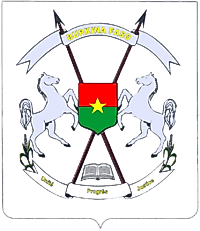
The Burkina Faso coat of arms features a shield based on the national flag that is supported by two white stallions. The name of the country is displayed above the shield, while the National Motto: Unité, Progrès, Justice (“Unity, Progress, Justice”) rests on a banner below. The two plants emerging from the banner containing the National Motto symbolizes pearl millet – an important cereal grain cultivated in the country.
National Motto:
Unité, Progrès, Justice (“Unity, Progress, Justice”)
National Anthem
- Anthem Title: " Une Seule Nuit"(also known as L'Hymne de la Victoire or Ditanye)
- Music Composer: Thomas Sankara
- Lyricist: Thomas Sankara
- Date of Adoption: August 12, 1984
The National Anthem of Burkina Faso is "Une Seule Nuit"(also known as L'Hymne de la Victoire or Ditanye). It was written and composed by former President Thomas Sankara. It was adopted on August 12, 1984, replacing the "Hymne Nationale Voltaique" (the national anthem of Upper Volta); when the country changed its name from Upper Volta to Burkina Faso.
"Une Seule Nuit" (French)
First Verse
Contre la férule humiliante il y a déjà mille ans,
La rapacité venue de loin les asservir il y a cent ans.
Contre la cynique malice métamorphosée
En néocolonialisme et ses petits servants locaux
Beaucoup flanchèrent et certains résistèrent.
Mais les échecs, les succès, la sueur, le sang
Ont fortifié notre peuple courageux et fertilisé sa lutte héroïque.
Chorus 1
Et une seule nuit a rassemblée en elle
L'histoire de tout un peuple.
Et une seule nuit a déclenché sa marche triomphale
Vers l'horizon du bonheur.
Une seule nuit a réconcilié notre peuple
Avec tous les peuples du monde,
A la conquête de la liberté et du progrès
La Patrie ou la mort, nous vaincrons!
Second Verse
Nourris à la source vive de la Révolution.
Les engagés volontaires de la liberté et de la paix
Dans l'énergie nocturne et salutaire du 4 août
N'avaient pas que les armes à la main, mais aussi et surtout
La flamme au coeur pour légitimement libérer
Le Faso à jamais des fers de tous ceux qui
Çà et, là en poluaient l'âme sacrée de l'indépendance, de la souveraineté.
Chorus 2
Et séant désormais en sa dignité recouvrée
L'amour et l'honneur en partage avec l'humanité,
Le peuple du Burkina chante un hymne à la victoire,
A la gloire du travail libérateur, émancipateur.
A bas l'exploitation de l'homme par l'homme!
Hé en avant pour le bonheur de tout homme,
Par tous les hommes aujourd'hui et demain,
Par tous les hommes ici et pour toujours!
Third Verse
Révolution populaire notre sève nourricière.
Maternité immortelle du progrès à visage d'homme.
Foyer éternel de démocratie consensuelle,
Où enfin l'identité nationale a droit de cité,
Où pour toujours l'injustice perd ses quartiers,
Et où, des mains des bâtisseurs d'un monde radieux
Mûrissent partout les moissons de vœux patriotiques,
brillent les soleils infinis de joie.
Chorus 1
Et une seule nuit a rassemblée en elle
L'histoire de tout un peuple.
Et une seule nuit a déclenché sa marche triomphale
Vers l'horizon du bonheur.
Une seule nuit a réconcilié notre peuple
Avec tous les peuples du monde,
A la conquête de la liberté et du progrès
La Patrie ou la mort, nous vaincrons!
One Single Night
First Verse
Against the humiliating bondage of a thousand years
Rapacity came from afar to subjugate them for a hundred years.
Against the cynical malice in shape
Of neo-colonialism and its petty local servants.
Many gave in and certain others resisted.
But the frustrations, the successes, the sweat, the blood
Have fortified our courageous people and fertilized its heroic struggle.
Chorus 1
And one single night has drawn together
The history of an entire people,
And one single night has launched its triumphal march.
Towards the horizon of good fortune.
One single night has brought together our people
With all the peoples of the World,
In the acquisition of liberty and progress.
Motherland or death, we shall conquer.
Second Verse
Nourished in the lively source of the Revolution,
The volunteers for liberty and peace
With their nocturnal and beneficial energies of the 4th of August
Had not only hand arms, but also and above all
The flame in their hearts lawfully to free
Faso forever from the letters of those who
Here and there were polluting the sacred soul of independence and sovereignty.
Chorus 2
And seated henceforth in rediscovered dignity,
Love and honour partnered with humanity,
The people of Burkina sing a victory hymn
To the glory of the work of liberation and emancipation.
Down with exploitation of man by man!
Forward for the good of every man
By all men of today and tomorrow,
By every man here and always!
Third Verse
Popular revolution our nourishing sap.
Undying motherhood of progress in the face of man.
Eternal hearth of agreed democracy,
Where at last national identity has the right of freedom.
Where injustice has lost its place forever,
And where from the hands of builders of a glorious world
Everywhere the harvests of patriotic vows ripen and suns of boundless joy shine.
Chorus 1
And one single night has drawn together
The history of an entire people,
And one single night has launched its triumphal march.
Towards the horizon of good fortune.
One single night has brought together our people,
With all the peoples of the World,
In the acquisition of liberty and progress.
Motherland or death, we shall conquer.
The Currency of Burkina Faso is the The West African franc
The current official currency of Burkina Faso is the West African franc (CFA, XOF). The currency is shared with eight other West African countries that includes Benin, Guinea-Bissau, Mali, Ivory Coast, Senegal, Niger, and Togo. CFA stands for Communauté Financière d'Afrique ("Financial Community of Africa"). The Banque Centrale des Etats de I'Afrique de I'Ouest or The Central Bank of West African States has the sole responsibility of issuing the currency.
The West African Franc has 100 subunits called centimes (c) but no centimes denominations are currently issued. It has a fixed exchange value of one euro to 655.957 CFA francs.
Coins and Banknotes
Since the introduction of the West African franc, several denominations have been created both in the form of coins and banknotes. The coins were made of aluminum, bronze, copper, nickel, steel, or a combination of these materials. Presently, coins are in denominations of 1, 5, 10, 25, 50, 100, 200, 250, and 500, with banknotes in denominations of 500, 1000, 2000, 5000, and 10,000 francs.
Historical Currencies of Burkina Faso
The introduction of the West African franc in 1945 was influenced by the decline of the French West African franc after the WWII. The Institut d’Emmision de l’Afrique Occidentale Françoise et du Togo initially issued the currency until it was replaced by the Central Bank of West Africa in 1959.
